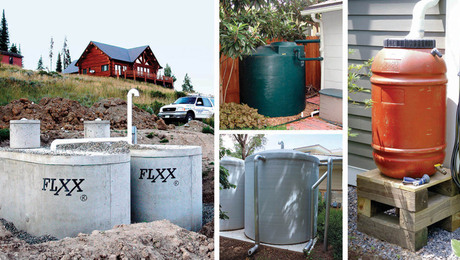Over the years some (1/4?) of the grouting has cracked and been lost between the rectangular flagstones (bluestones?) on our patio. The stones are various sizes, none very small, and about 1″ thick. Digging out the grout reveals a concrete base, with the stones sitting on a sand layer that varies from 1/2″ to about 1″ deep.
I had planned to regrout with a portland/sand mix (with additive?), but after some on-line research, I haven’t found references to sand-bedding on top of a slab like this. Is this an acceptable technique, or does the sand need to be replaced with mortar? I live in NY, so rain, snow, and freezing temps are common. To be fair, the patio has had no maintenance for thirty years, and has in general held up very well.
Thanks.


















Replies
if you replace the grout every 30 years, i'd say, your doing well. i would remove the old grout and replace it with new. you can use a bakers piping bag to apply new grout. make a messy job alittle cleaner.
Polymorphous sand is becomming all the rage for flagstone. But I have a client who had it installed and his wife twisted her ankle the first time she walked on it in high heals. Too soft.
Depending on your use, you may wanna stick with mortar. If it's not a concern, poly sand may be the easier/quicker install.
Mike Hennessy
Pittsburgh, PA
Everything fits, until you put glue on it.
Thanks, but I wasn't asking about sand versus mortar as grout, if that's what you meant.
What I meant was is it OK that the stones are bedded in a thin layer of sand (on top of the underlying concrete slab), or do they need to be reseated in mortar? Sorry if I wasn't clear about that.
Considering it is sitting atop a concrete base it is odd that they set the stones onto a bed of sand before grouting it. I was involved for many years in landscape work and can't say I have ever seen someone do that. Setting the stones into mortar is going to be more durable than atop a sand base (as you have discovered), but whether you want to go through the considerable amount of work of undoing the remaining stonework and redoing it is a judgement call you will have to make. If you are content with how long the grout lasts in your current scenario... then regrout, and realize that you will have to continue to fix up areas as the mortar comes loose again. The only problem with that plan (if it bothers you) may be that you might end up with a fairly patchy looking grout job as various areas get regrouted at different times.
Kivi and others,Thanks for the opinions. I think I'll move ahead with mortar grout but leave the stones bedded in their thin sand layer (on top of the slab). I have to admit that it really has held up quite well for 30 years or so in that configuration.
sounds like "past performance is a GOOD indicator of future returns" in your case. The aggregage base is intended to provide the stable base that your concrete does plus drainage. Since you don't have a drainage problem then stick with what works.
I disagree with the other poster who said use a mix that is soft enough to use a baker's bag to install. You should use a very stiff mix and use a pointing trowel to pack the mortar between the stones and then cover the fully grouted patio for as long as you can stand with plastic to ensure that the grout cures hard hard hard. Keep it damp.
my 2 cents
Brad - what ratio of portland/sand would you recommend? Or something else for the grouting?
I have a couple thousand sq/ft of flagstone over concrete. It is not on sand tho. It is set in type S mortar. The real trick is cleaning after you grout and before it sets up. I also figured out a little "flex" tile mortar 6:1 or so mixed into the type S makes this a lot tougher stuff and it sticks better.
I have never seen an installation as he describes, but my inclanation is to grout it with a material that may flex a little...hard hard hard is not what you want.
Think about old brickwork,they used a lime mortor that was not to hard at all so the bricks could expand and contract with no cracking. His stones may-will move some.
That said, I do not have a specific mortor mix to recomend.
I agree with where the others are coming from--sand between the flagstones and the concrete is a bit odd.
I'm surprised how well it's held up. I wouldn't expect it to hold up that well due to freeze-thaw action. Water is getting into the sand, then expands 9% during freezing (unevenly, of course), adjacent flagstones end up tilting/heaving differently, and the grout cracks. The cracks you see might be 30 years old or pretty recent, but my bet is that they probably started the first season after the flagstones were laid. Best bet would be to mortar them directly to the concrete, tho' I know that's a lot of work.
Peter
You can just as easily have problems with a mortar bed joint. If
the sand has works so far, stick with it.
I'm in NY also and have seen many a patio with popped flag stones.
Our freeze thaw cycle is brutal on mortar.
the sand bed joint is a throw back to the ancient times when it was used as a decoupling layer
( allowing the surface to move independent of the substraight).
This is an unusual usage but there is a precedent.
In fact Ditra is a popular product that does the same.
It is well respected and recognized, so perhaps your mason was on to something.